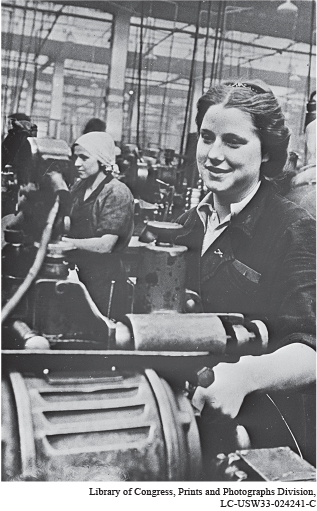Anna Dubova, a Russian Peasant Girl and Urban Woman

B orn into a large peasant family near Smolensk in western Russia in 1916, Anna Dubova lived through the entire communist experience of her country.8 Hers was a life that illustrates the complexities that ordinary individuals faced as they sought to navigate the communist system.
Anna was one of fourteen children, of whom seven survived. Her family was dominated by a strict, hardworking, and highly religious father, who was choirmaster of the local church. Anna’s father was suspicious of the communists when they came to power the year after Anna’s birth, but her grandmother was more forthright. “We have a new tsar,” she declared. “The forces of the Antichrist have triumphed.” Nonetheless, her father accepted an appointment in 1922 as chairman of the village soviet, the new communist organ of local government. During the 1920s, the village and Anna’s family flourished under Lenin’s New Economic Policy, which briefly permitted a considerable measure of private enterprise and profit making. Her father even opened a small shop in the village where he sold goods purchased in the city.
By 1928, however, everything changed as the Soviet regime, now under Joseph Stalin’s leadership, abruptly moved to collectivize agriculture and root out kulaks, supposedly wealthy peasants who were thought to bear the germ of a hated capitalism. Because of her father’s shop, the family was labeled as kulak and their property was confiscated. “I remember so well how Mama sat and cried when they took away the cow,” Anna recalled years later. The family forestalled their expected deportation to the far north of the Soviet Union only by promising Anna, then just thirteen, in marriage to the local Communist Party secretary. The marriage never took place, however, and the family was forced to leave. Later, Anna was permitted to join her older sister in Moscow, but approval for that much-coveted move came at a very high price. Anna recalled, “I had to write out an official statement that I renounced my parents, that I no longer had any ties with them.”
Thus Anna, a rural teenager, joined millions of other peasants who flocked to the city to pursue new opportunities that became available as the Soviet Union launched its industrialization drive. In Moscow, she gained a basic education, a vocation in cake decorating, which she enjoyed, and a brief stint as a mechanic and chauffeur, which she detested. All the while the shadow of her kulak label followed her. Had it been discovered, she could have lost her job and her permission to live in Moscow. And so she married a party activist from a poor peasant family, she explained years later, “just so I could cover up my background.” Her husband drank heavily, leaving her with a daughter when he went off to war in 1941.
In the Soviet Union, the late 1930s witnessed the Terror when millions of alleged “enemies of the people” were arrested and hauled off to execution or labor camps. Anna recalled what it was like: “You’d come home and they’d say, Yesterday they took away Uncle Lesha…. You’d go to see a girlfriend, they’d say, We have an empty room now; they’ve exiled Andreitsev.” Like most people not directly involved, Anna believed in the guilt of these people. And she feared that she herself might be mistakenly accused, for those with a kulak label were particular targets of the search for enemies. “I was only afraid,” she remembered, “that I would be raped in prison.”
Beyond her kulak background, Anna also felt compelled to hide a deep religious sensibility derived from her childhood. She remembered the disappearance of the village priest, the looting of the churches, and the destruction of icons. And so she never entered a church or prayed in front of others. But she wore a cross under her clothing. “I never stopped [believing],” she recalled. “But I concealed it. Deep down … I believed.” Nor did she ever seek to join the Communist Party, though it may well have advanced her career prospects and standard of living. Perhaps she feared that the investigations accompanying party membership would have disclosed her compromising social and religious background.
In the decades following World War II and especially after Stalin’s death in 1953, Anna’s life seemed to stabilize. She entered into a thirty-year relationship with a man and found satisfying work in a construction design office, though the lack of higher education and party connections prevented her from moving into higher-paid jobs. Looking back on her life, she regretted the communist intrusion, particularly in its Stalinist phase, into what she remembered as a happy childhood. She had come to value, perhaps nostalgically, the life of a peasant over that of an urban worker. She reflected, “[As a peasant,] I would have lived on the fruits of my labor…. [Instead,] I’ve lived someone else’s life.”
Question: In what ways did communism shape Anna’s life, and in what respects was she able to construct her own life within that system?